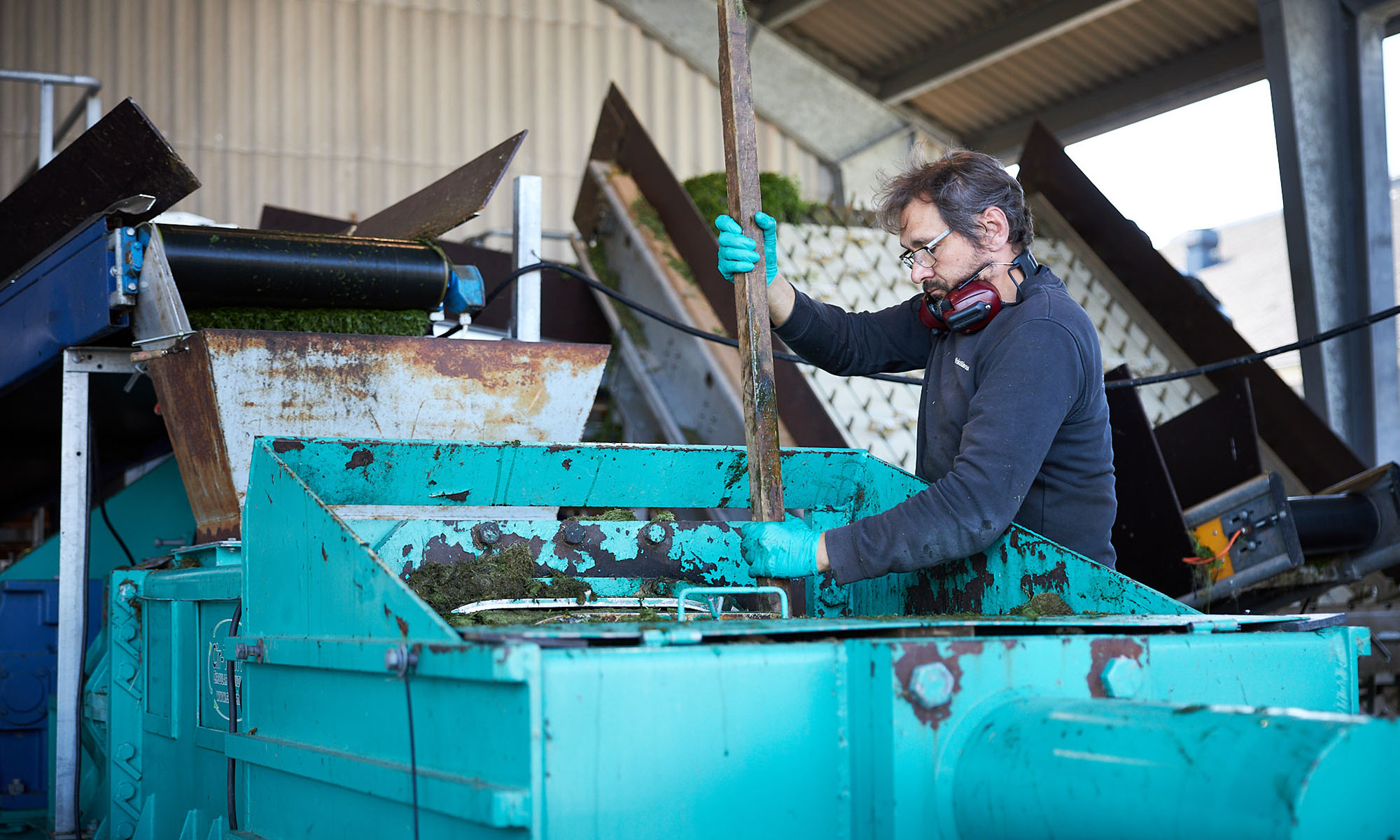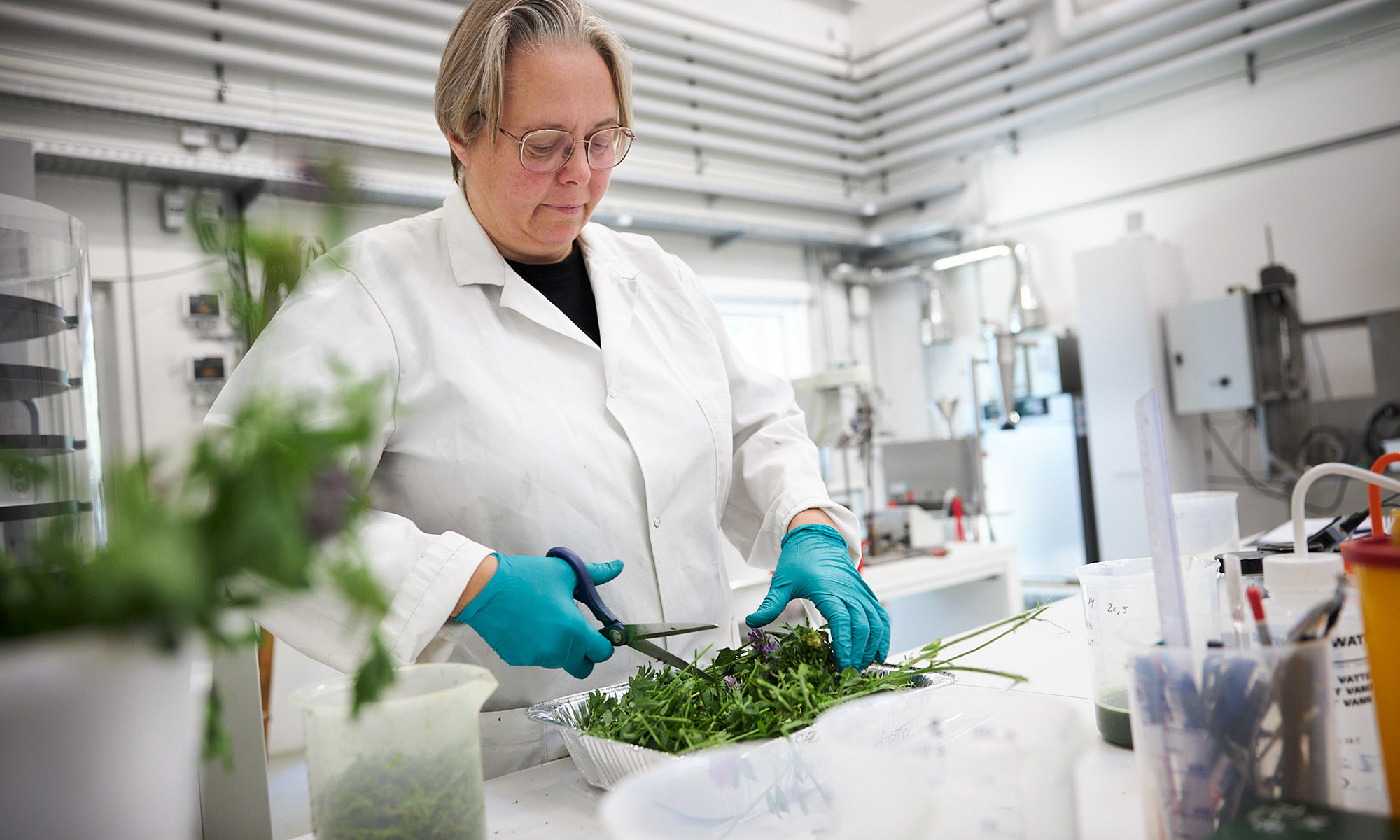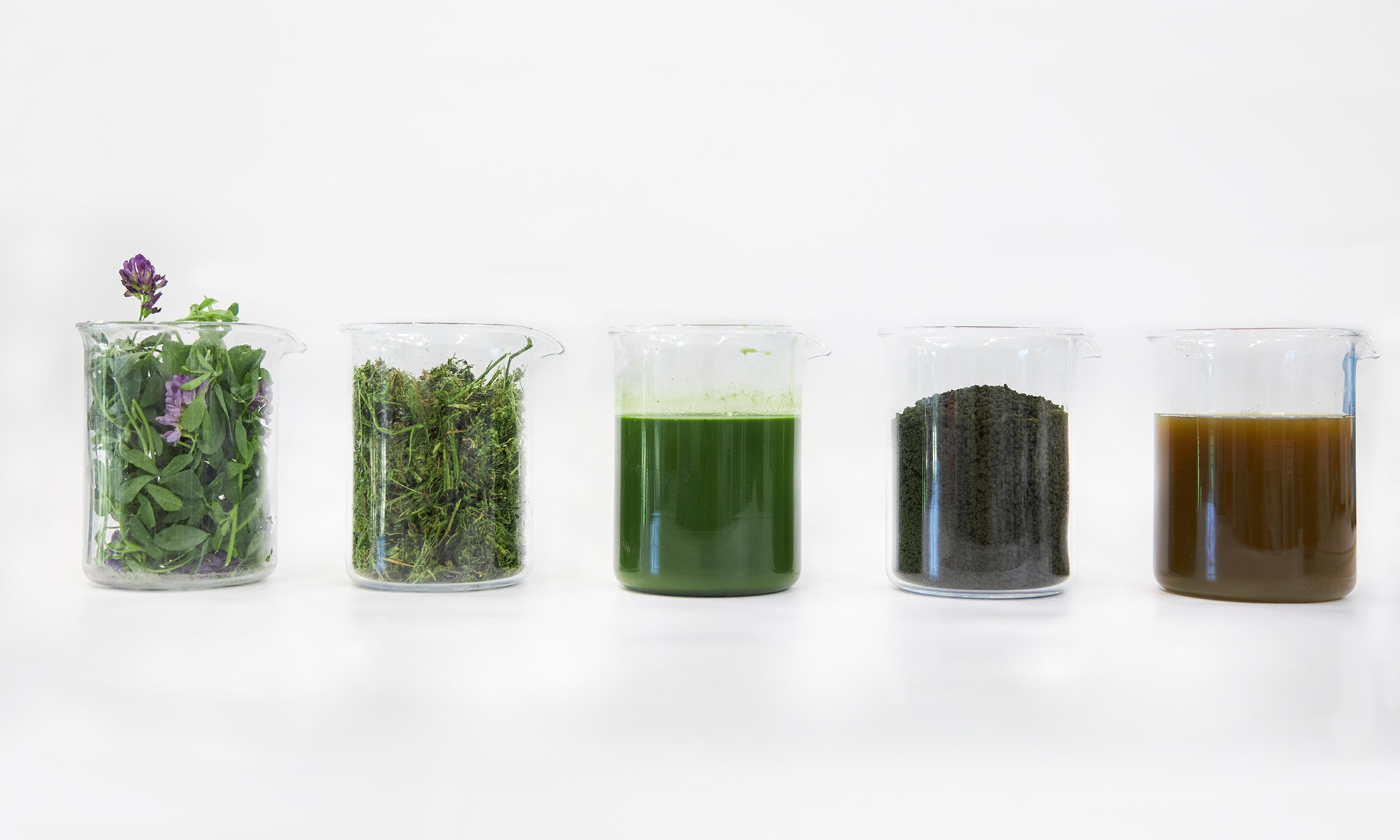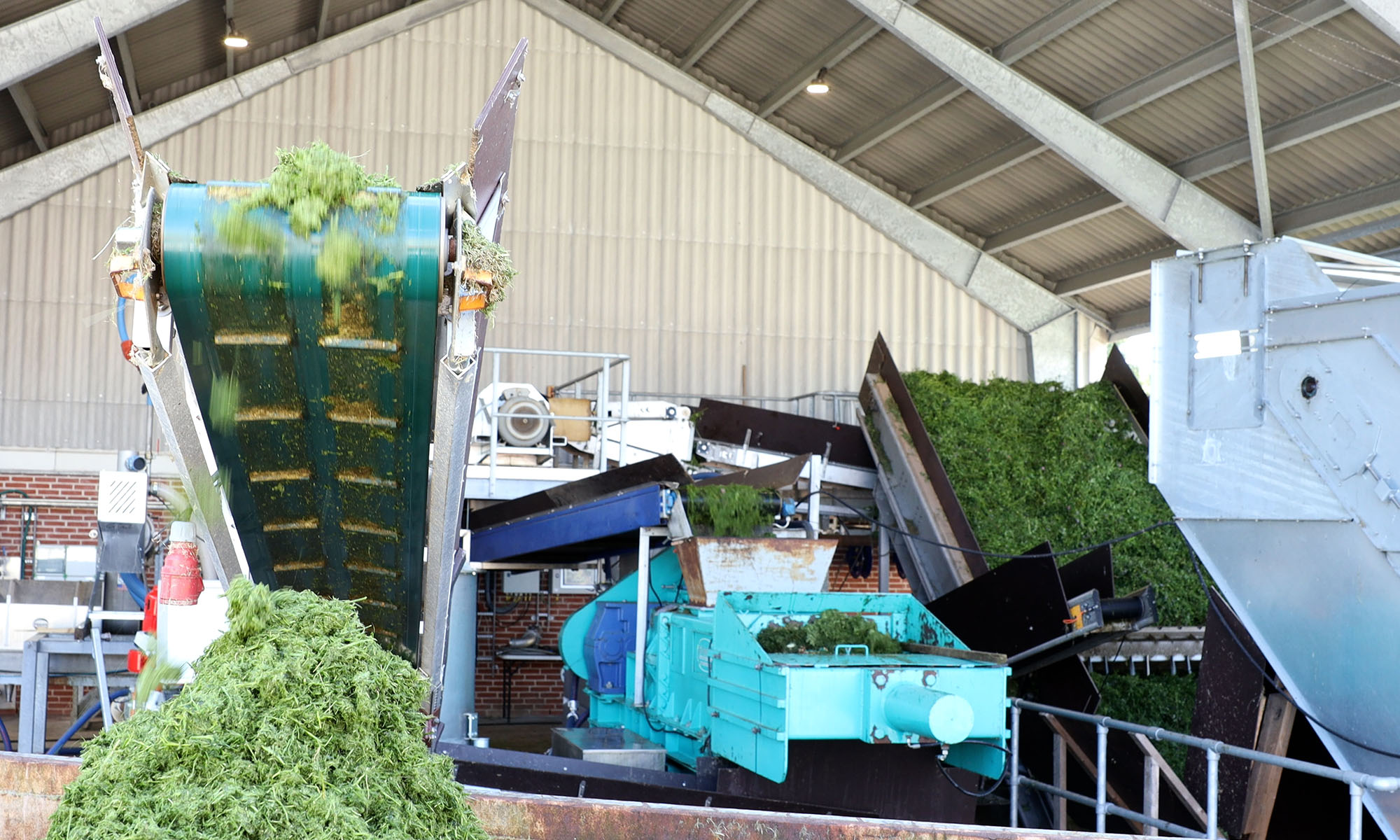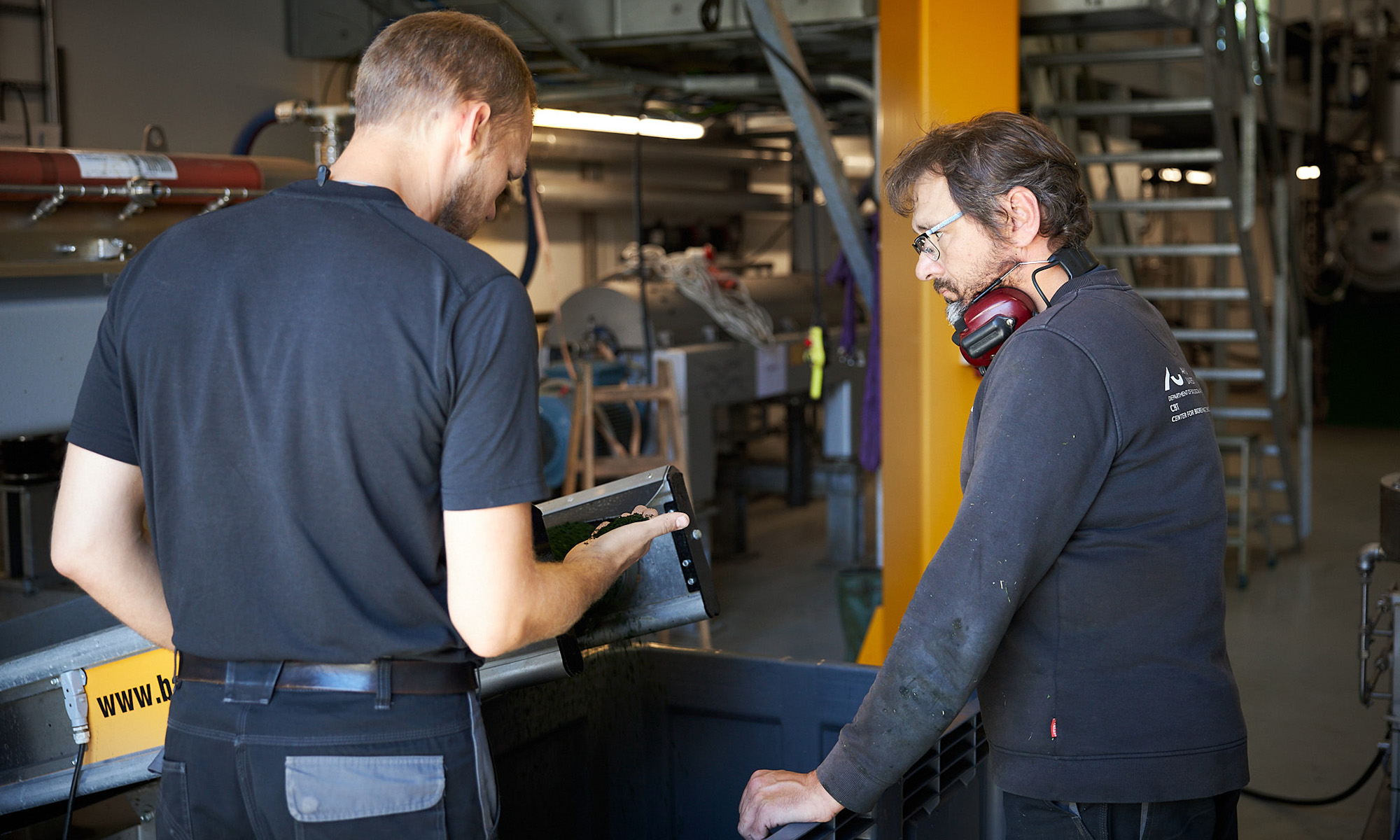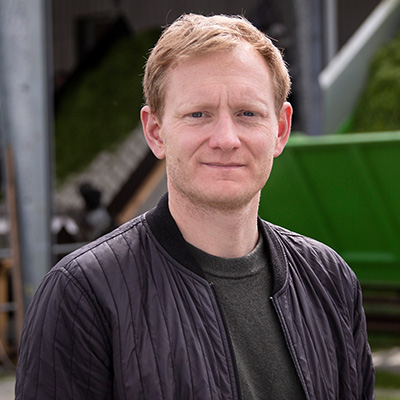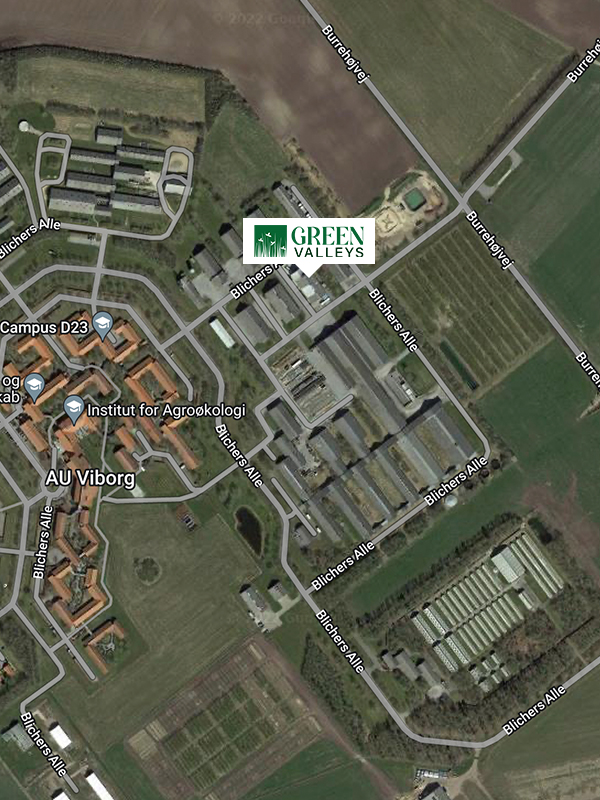
Since it was inagurated in 2019 the demonstration platform is unique of its kind
It has delivered solid data and state-of-the art-results in the technology of green biorefinery with focus on technologies which can be used commercially. The machines are made for industrial use and can be scaled and used by stakeholders who wants to work with green biorefinery and produce products like feed, food, biomaterials, bio energy and fertilizer.
Biorefining of fresh grass
The Green Biorefining technologies Group work with separating fresh green biomass into a fiber pulp, protein products and a residual liquid known as brown juice., The demonstration platform is a flexible platform that is continuously optimized and innovated – depending on the research- and develop projects it is used for. Here, different plants are tested – like grass, clover, lucerne, after crops, seaweed, and more exotic bio resources like cassava leaves. These plants are processed in the demonstration platform in three levels: the biorefinery, the process hall and the laboratory.
The demonstration platform can process from 3 to 10 ton biomass pr. hour, depending on the biomass. The fresh biomass is put into a maceration process before it is pressed. Different types of maceration and pressing technologies are being tested, compared, and optimized. We are both working with cutting or shredding of the freshly harvested biomass and with mixing the biomass into a liquid process stream and macerated in equipment types fit for pumpable slurries and separated in a two-step dewatering and pressing process. The fiber pulp is assessed according to its protein content – so it can be used for e.g. ruminant feed, biomaterials or bioenergy.
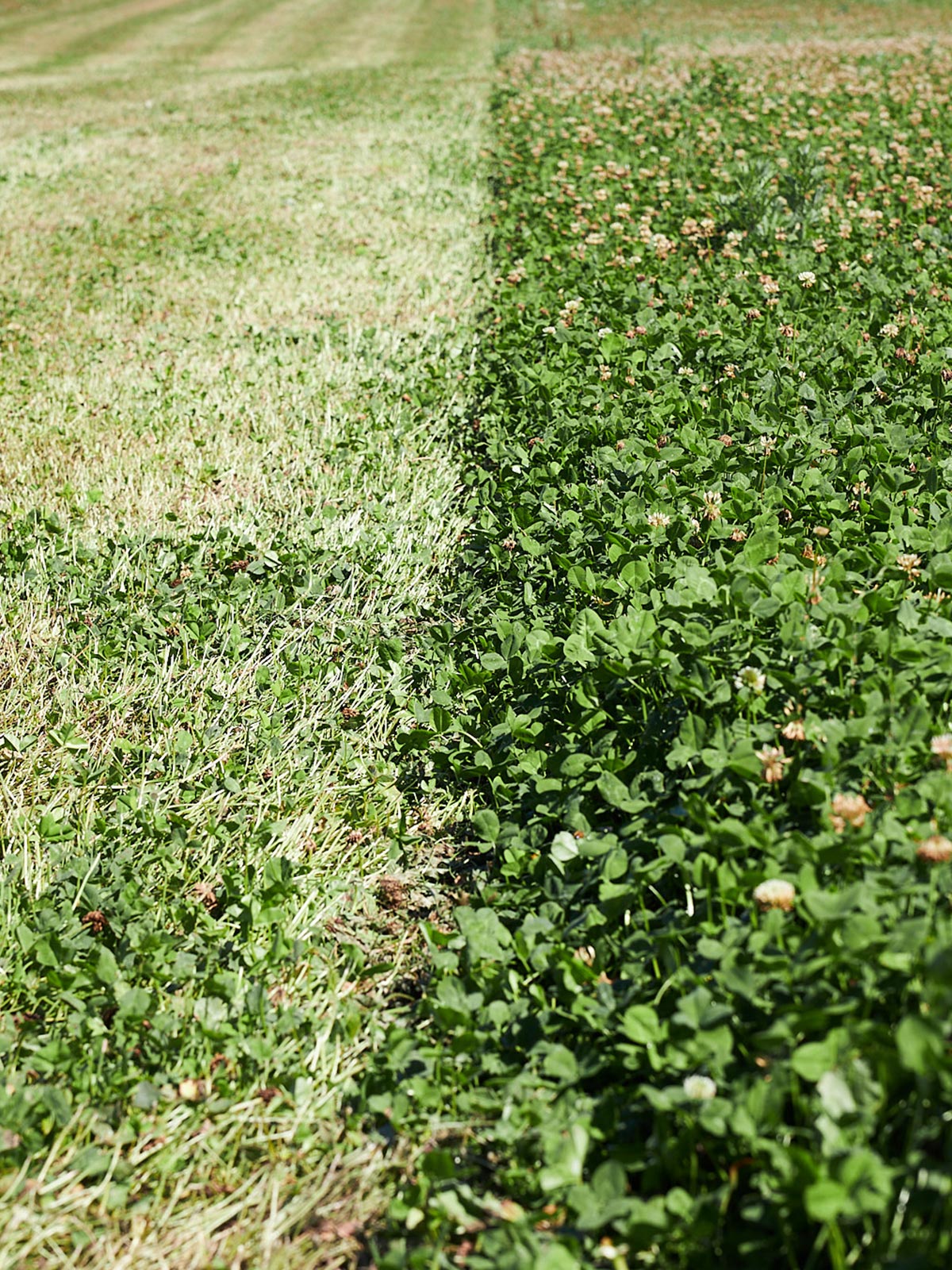
Protein concentrate and a brown juice
The protein separation of the green juice happens in the process hall in by precipitating the proteins either chemically, biologically, or thermally and separated in high speed- or decanter centrifuges. Here, the outcome is a protein concentrate and a brown juice.
The protein product can be extracted in several qualities and is used in feed and food applications. The basic process using thermal precipitation produces a protein concentrate with 50-60% crude protein and have been proved to successfully substitute 100% soy meal in feed for monogastric animals. The process is continuously being improved and development to also produce protein isolates for food products are ongoing.
The brown juice contains soluble organic compounds as well as inorganic nutrients and can be readily used for biogas production, fermentation media and fertilizer products.
Lastly, all tests and development trials on the demonstration platform is thoroughly monitored through inline process data and sample analysis in the laboratory.

